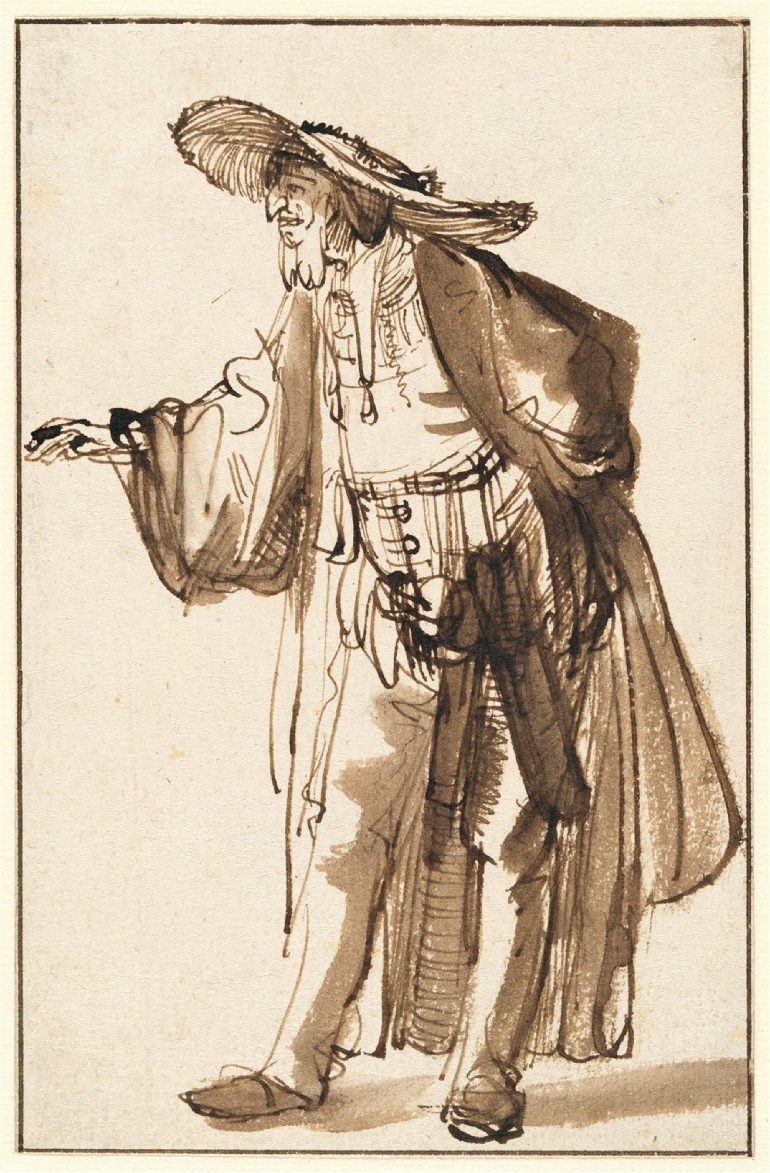Rembrandt was a master storyteller, not with words but with images. To tell stories, he made use of techniques also used in the theatre, such as facial expressions, gestures, lighting, costumes and accessories. Additionally, he chose the best moment to depict: the moment of greatest tension, of ultimate suspense. Rembrandt House Museum, the only museum in the world completely dedicated to Rembrandt, highlights in the exhibition Directed by Rembrandt, for the first time, the artist’s role as a director of his own artworks.
In Rembrandt’s time, several types of theatre were on show in the streets of Amsterdam. The annual autumn fair in particular was great fun. Musicians, quacks and traveling theatre groups put on their shows. Rembrandt too went to see them. It was at this time that Amsterdam’s theatre scene was undergoing drastic change. The first theatre building in the Netherlands opened in Amsterdam on 3 January 1638. From then on, almost every Amsterdammer could go to the theatre for an entrance fee. Performances were staged twice a week, on Mondays and Thursdays.
Rembrandt visited this theatre; proof of this are the drawings he made ‘after life,’ i.e., on the basis of his own observations. He especially liked zooming in on actors. An actor he drew many times was Willem Ruyter, an impressive man with a striking appearance who could single-handedly fill the entire stage. As a star performer of the new Schouwburg theatre, he was paid 1.5 guilders per show. This was a relatively large amount, but not enough to make ends meet. For that reason, Ruyter also worked as an innkeeper.
The exhibition also focuses on Rembrandt as the director of his own artworks. The techniques he used to create a powerful and compelling story in one image are similar to those used in the theatre. In the exhibition several masterpieces by Rembrandt show how he directed his scenes, for example Potiphar’s Wife Accuses Joseph, on loan from the Staatliche Museen zu Berlin, and Susanna from the Mauritshuis. They show how Rembrandt combined his directing techniques to create images that tell fascinating stories. These paintings illustrate Rembrandt’s keen awareness that selecting the right dramatic moment from a story was key to a painting’s success. Unlike his contemporaries, who depicted post-turning point emotional outbursts, Rembrandt’s preference was capturing the anticipation just before the narrative’s crescendo. A striking example is his portrayal of Susanna, caught in a vulnerable moment as she realizes two men are spying on her while she bathes.
Directed by Rembrandt also invites visitors to look at their own storytelling techniques. Just as Rembrandt carefully curated moments, expressions, gestures and attire in his paintings, individuals today craft images and videos for social media, with each post representing a deliberate storytelling choice. Visitors are encouraged to actively engage in their own storytelling within the exhibition, drawing inspiration from Rembrandt’s legacy as a master storyteller.
Directed by Rembrandt
2 March-6 May 2024
Rembrandt House Museum
Open daily from 10:00 to 18:00
